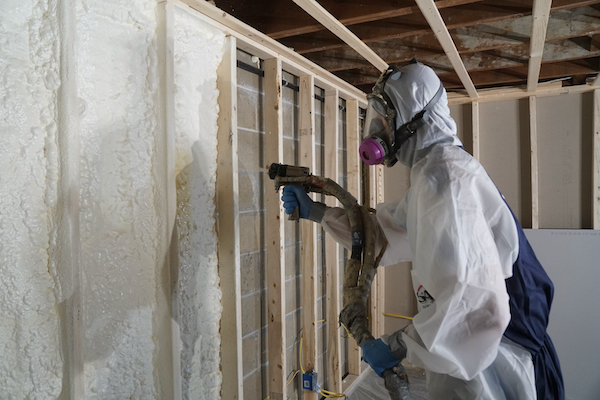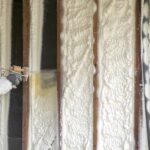In Seattle, where homes constantly battle rain, moisture, and fluctuating temperatures, insulating a property isn’t just about saving energy—it’s about protecting your home from deeper, often invisible damage. While many homeowners attempt quick fixes or hire the lowest-cost providers, these decisions frequently backfire. What seems like a cost-saving measure upfront can quietly turn into mold infestations, damaged framing, or skyrocketing energy bills.
By working with a professional insulation company, Seattle property owners avoid seven of the most common and expensive mistakes. From moisture control to meeting local building codes, experienced spray foam insulation installers bring technical precision and regional expertise that generic solutions simply can’t match.
This article uncovers those common pitfalls and explains why hiring an expert can be the difference between a home that performs efficiently year-round—and one that quietly deteriorates behind the walls.
Mistake 1: Poor Moisture Control in a Wet Climate
Seattle’s wet and marine-influenced climate brings near-constant humidity, rain, and condensation risks. Many DIY or low-cost insulation attempts use materials like fiberglass or poorly installed foam boards that absorb moisture or leave gaps. Once water seeps in—whether from crawlspaces, basements, or rooflines—it doesn’t take long before insulation loses effectiveness and mold starts to spread.
Poor moisture control isn’t always visible right away. Sometimes, homeowners only realize there’s a problem when they notice musty smells, cold drafts, or swelling in baseboards. By that time, they’re already dealing with rot, mold remediation, and major repair costs.
Professionals prevent this by selecting closed-cell spray foam insulation, which acts as both a thermal barrier and vapor barrier. It creates a tight seal even in tricky corners and damp areas like basements and crawlspaces, keeping moisture out before it causes damage.
Mistake 2: Using the Wrong R-Value for Seattle’s Needs
Every insulation product is rated by its R-value, which indicates how well it resists heat transfer. But R-value isn’t a one-size-fits-all number—it depends on the part of the house, climate zone, and even the direction walls face. Seattle falls under Climate Zone 4 Marine, which demands specific insulation thickness and types.
A common mistake is assuming “more insulation” is better, or worse, settling for underperforming R-values to save money. This usually leads to drafts, uneven temperatures, and overworked HVAC systems. Eventually, these homes struggle to hold heat in winter or stay cool in summer, driving up energy bills year after year.
An experienced spray foam insulation company evaluates each space individually. They match R-values to local codes, climate demands, and how the building behaves throughout the seasons. More importantly, spray foam’s high R-value per inch allows it to outperform bulkier options like fiberglass while taking up less space.
Mistake 3: Leaving Hidden Air Leaks Untreated
Sealing the visible parts of a wall or attic is only half the job. Air leaks often occur in places homeowners can’t see or reach—around wiring penetrations, plumbing holes, ductwork seams, and top plates. Even small leaks allow conditioned air to escape, which not only raises energy usage but also pulls in outside moisture and allergens.
Many insulation materials don’t address air sealing unless applied by trained professionals. A typical batt or blown-in job might leave dozens of micro gaps that cumulatively waste energy.
Spray foam insulation, when installed by a certified technician, expands into cavities and around obstructions, forming a seamless, airtight barrier. It eliminates the need for separate caulking or foam sealants, delivering complete coverage in a single application.
Professionals also test the home before and after installation with blower door tests to confirm leak reduction—something DIYers and general contractors rarely offer.
Mistake 4: Ignoring Seattle’s Strict Building Codes
Seattle and King County enforce specific requirements for insulation, especially when it comes to fire safety, ventilation, and vapor management. Renovations, attic conversions, or accessory dwelling units (ADUs) require detailed compliance, and even minor oversights can trigger inspection failures or permit rejections.
Many homeowners working with unlicensed or general tradespeople don’t realize their insulation job violates code until it’s too late. Common mistakes include:
- Skipping ignition barriers in spray-foamed attics
- Using the wrong vapor retarders in below-grade walls
- Inadequate R-values for new conditioned spaces
Professional spray foam insulation installers understand the intricacies of Seattle’s permitting process. They use approved materials, understand setback rules, and provide documentation that inspectors require—preventing costly delays and fines.
Mistake 5: Improper Application That Compromises Performance
Even high-quality insulation can fail if it’s not applied correctly. Inconsistent foam thickness, off-ratio chemical mixing, or over-application can cause voids, sagging, or chemical crystallization. These issues often don’t appear until months later when insulation settles, compresses, or starts cracking—leaving areas exposed to heat loss.
Professionals use calibrated spray rigs, monitor temperature and humidity closely, and apply insulation in multiple thin layers (called “lifts”) to ensure even coverage. It’s a precise process that requires training, judgment, and hands-on experience.
Technical Application Table
| Application Factor | Correct Standard | Result of Poor Technique |
|---|---|---|
| Lift Thickness | ≤ 2 inches per pass | Overheating, collapse |
| Temperature Range | 70°F–120°F substrate | Weak adhesion, off-ratio foam |
| Mixing Ratio | 1:1 by volume (A:B) | Brittle or oily foam |
| Curing Time | 24 hours before re-entry | Off-gassing health risks |
Mistake 6: Overlooking Health and Safety Risks
Some homeowners attempt DIY foam kits, thinking they’ll save money. But these kits often emit toxic fumes if mixed or applied improperly. Without protective gear, applicators expose themselves to respiratory hazards and chemical burns. Worse, the lack of ventilation during curing can trap off-gassing fumes indoors.
Professionals don’t cut corners on safety. They use full personal protective equipment (PPE), enforce strict re-entry timelines, and ensure mechanical ventilation clears the air. They also apply fire-safe coatings in exposed areas, reducing ignition risk in unfinished basements or attics.
Bonus Tip: If you smell a chemical odor in your home days after insulation, it’s likely due to improper application—something a professional would never overlook.
Mistake 7: Going for Short-Term Savings Instead of Long-Term Value
Low-cost insulation may appear to solve the problem today, but it often leads to major headaches tomorrow. In Seattle’s demanding environment, that means replacing soggy batts, addressing mold issues, or constantly adjusting thermostats.
Spray foam installed by experts provides performance for 25 to 30 years with no settling, sagging, or reapplication. It’s a long-term investment that increases property value and drastically reduces lifetime heating and cooling costs.
Cutting corners during installation might seem like a smart financial move—but it’s actually the most expensive choice in the long run.
Comparison Table Spray Foam vs Other Methods in Seattle
| Insulation Type | Moisture Control | Energy Efficiency | Lifespan | Air Seal Quality | Requires Professional |
|---|---|---|---|---|---|
| Fiberglass | Poor | Moderate | 10–15 years | Weak | Not always |
| Cellulose | Medium | Good | 10–20 years | Moderate | Recommended |
| Spray Foam (Open Cell) | Medium | Excellent | 20+ years | Excellent | Yes |
| Spray Foam (Closed Cell) | High | Exceptional | 30+ years | Superior | Yes |
Things to Consider Before Hiring an Insulation Company
Before committing to an insulation project, consider how your home behaves throughout the year. Are there specific rooms that stay cold in winter? Are energy bills consistently high? Do you notice signs of dampness or mold? These are red flags that basic insulation can’t solve.
Also, think long term. Will you be renovating, finishing a basement, or adding a rental unit? These projects require insulation that meets both performance and legal standards.
Finally, choose a provider with deep knowledge of Seattle homes—not just insulation in general. Look for installers with specific spray foam training, familiarity with city permitting, and a history of local work.
Common Questions
Is spray foam worth the cost compared to other insulation types? Yes. While it has a higher upfront cost, it eliminates air leaks, lasts decades, and dramatically reduces energy bills—making it cost-effective long term.
Can I insulate existing walls without tearing them open? Yes. Professionals use injection methods that retrofit spray foam into wall cavities with minimal disruption.
How long does the spray foam installation process take? Most homes can be completed in one to two days, with re-entry permitted after 24 hours of curing.
What if my home already has insulation? Professionals assess the condition and compatibility of existing materials. In many cases, old insulation is removed before installing spray foam.
Is professional insulation required by code for remodels or new builds? Yes. Seattle building codes require professional-grade insulation methods and documentation for most construction and renovation projects.
Ready to Protect Your Home and Lower Your Energy Bills?
Every year, countless Seattle homeowners unknowingly spend more than they should—on heating, on mold remediation, on fixing avoidable damage. But these problems don’t start with storms or cold spells. They start behind your walls, when insulation is done incorrectly.
Cascadia Spray Foam of Seattle understands what it takes to insulate homes in one of the Pacific Northwest’s most challenging climates. Their team combines precision, compliance, and experience with a commitment to doing the job right the first time. Whether you need to seal a leaky attic or fully upgrade your home’s insulation system, their experts bring peace of mind with every project.
Don’t wait for the damage to show—act before the signs appear. Apply these insights now: Schedule your custom spray foam consultation with Cascadia Spray Foam of Seattle.
📞 (425) 386-3500 📧 info@cascadiasprayfoam.com
Reviewer:
Olivia Thompson has spent 10 years working in spray foam insulation, helping companies grow their visibility. She reviewed this article and provided valuable suggestions on how to better align the content with the needs and expectations of customers, ensuring it resonates with the target audience.



